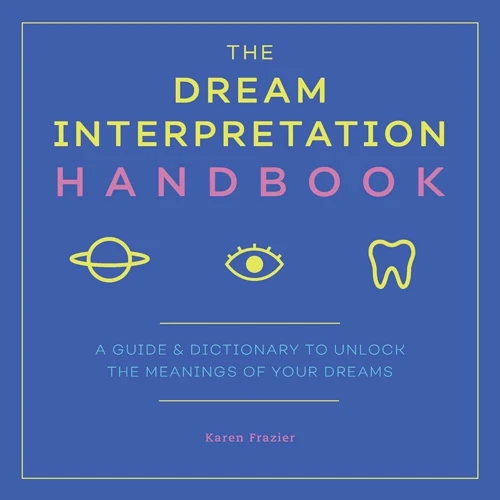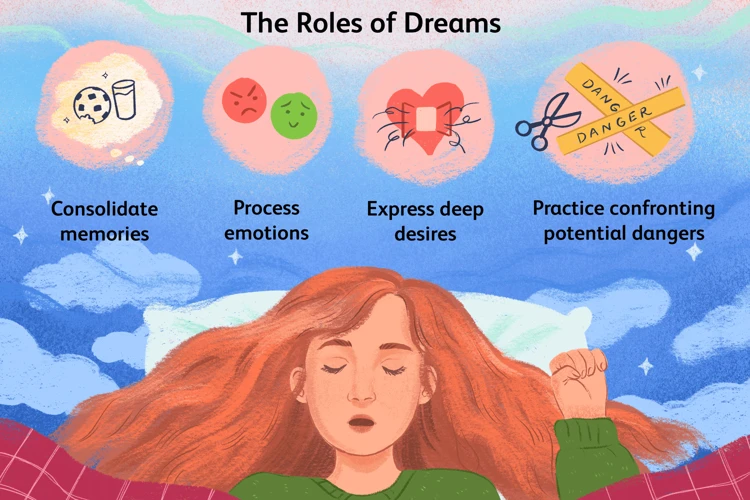Unlocking Your Hidden Ambitions: Decoding Dream Patterns

Have you ever found yourself waking up from a vivid dream, wondering what it all meant? Dreams have long been a source of fascination and intrigue, offering a window into the depths of our subconscious minds. They hold the potential to unlock our hidden ambitions and provide valuable insights into our lives. By decoding the patterns within our dreams, we can gain a deeper understanding of ourselves and use this knowledge to transform our waking lives. In this article, we will explore the importance of dreams, learn how to identify dream patterns, uncover hidden goals, interpret dream symbols, tap into the subconscious, and apply dream insights to real life. Get ready to embark on a journey of self-discovery as we dive into the enigmatic world of dreams.
The Importance of Dreams

Dreams serve as a remarkable gateway to the inner workings of our minds and emotions. They offer a unique opportunity to gain insights into our deepest desires, fears, and aspirations. Dreams act as a mirror, reflecting the state of our unconscious mind and providing valuable clues about our psychological well-being. By examining and analyzing our dreams, we can uncover hidden patterns, unresolved issues, and unexplored potentials. It is through our dreams that we can access a realm where our subconscious freely expresses itself, unhindered by the constraints of waking life.
In addition to being a catalyst for self-discovery, dreams provide a platform for problem-solving and creativity. Many great ideas, inventions, and artistic breakthroughs have been inspired by dreams. Throughout history, numerous individuals have credited their dreams for guiding them towards their true purpose or helping them find innovative solutions to complex problems. Dreams have the ability to tap into our innate wisdom and offer fresh perspectives that may elude us in our waking state.
Dreams play a crucial role in healing and emotional processing. They allow us to process and integrate difficult experiences, traumas, and unresolved emotions. Dreams provide a safe space to explore and release repressed feelings, enabling us to heal and move forward in our lives.
Understanding the importance of dreams can unlock a wealth of untapped potential. They reveal valuable information about our innermost desires, fears, and aspirations. By paying attention to our dreams and exploring their various layers of meaning, we can gain profound insights into ourselves and use this knowledge to create a more fulfilling and purpose-driven life. So, put on your explorer’s hat and get ready to delve into the mysterious realm of dreams.
Dreams as a Reflection of the Unconscious Mind
Dreams provide a unique window into our unconscious mind, offering a glimpse into the hidden depths of our psyche. They serve as a reflection of our deepest thoughts, emotions, fears, and desires. While we may not always be aware of these underlying aspects during our waking lives, they find expression in our dreams. The unconscious mind, which operates beyond the realm of our conscious awareness, continuously communicates with us through symbolic imagery and themes in our dreams.
Through dreams, our unconscious mind communicates its concerns, desires, and unresolved conflicts that may be influencing our daily lives. For example, a recurring dream about being chased may express feelings of anxiety or a sense of being pursued by issues or responsibilities. Dreams can also highlight areas where we may be repressing certain emotions or experiences, giving us an opportunity to confront and work through them.
By paying attention to the content of our dreams, and keeping a dream journal, we can begin to decipher the messages hidden within. Writing down our dreams immediately upon waking helps capture the details and emotions, which can often fade quickly from memory. This practice allows us to analyze these dreams over time, looking for patterns and common themes that may provide valuable insights into our unconscious mind.
Understanding that dreams are a reflection of our unconscious mind helps us gain a deeper understanding of ourselves and the underlying factors influencing our thoughts, behaviors, and motivations. By exploring the symbolism and themes in our dreams, we can unlock a wealth of information that can guide us towards personal growth, self-discovery, and achieving our aspirations. So, let’s embark on this journey of unraveling the mysteries of our dreams and discover the hidden treasures they hold.
The Role of Symbols and Themes in Dreams
Symbols and themes are key components in the intricate landscape of dreams. They serve as a language of the unconscious, conveying messages and insights that may be difficult to interpret at first glance. Symbols in dreams are visual representations that carry personal and collective meanings. They can be archetypal symbols, such as water, animals, or masks, which hold universal significance across cultures. They can also be personal symbols, unique to the individual’s experiences and associations. These symbols often possess layers of meaning, requiring careful exploration and interpretation.
Themes, on the other hand, are the recurring patterns or motifs that emerge in our dreams. They provide a broader context and shed light on the underlying issues we may be grappling with in our waking lives. For example, recurring themes like falling, flying, or being chased can indicate feelings of insecurity, freedom, or a sense of pursuit in our daily existence. By identifying these themes and their meanings, we can uncover significant areas of our lives that may require attention or further exploration.
To effectively decode the role of symbols and themes in dreams, it is vital to maintain a dream journal. Keeping a record of your dreams allows you to identify recurring symbols and themes over time, creating a valuable database for analysis and interpretation. Consider jotting down any symbols, themes, emotions, and interactions that stand out in your dreams, as well as the context in which they arise. This will help you recognize patterns and gain a deeper understanding of their significance.
Remember, the interpretation of symbols and themes in dreams is highly subjective and can vary from person to person. It is essential to consider your own associations, cultural background, and personal experiences when deciphering the messages concealed within your dreams. By unraveling the rich symbolism and exploring the recurring themes, you can uncover hidden insights and gain a greater understanding of yourself and your aspirations.
Identifying Dream Patterns

Recognizing the patterns within our dreams is a crucial step in unlocking their deeper meanings and uncovering our hidden ambitions. By keeping a dream journal, we can document our dreams in detail and start to identify recurrent symbols, themes, and emotions that weave through our dreamscapes.
A dream journal serves as a valuable tool for capturing the essence of our dreams. Upon waking, take a few moments to jot down any fragments, images, or emotions that you recall from your dream. Pay attention to the smallest details, as even seemingly insignificant elements can hold significant meaning. Make it a habit to regularly revisit your dream journal, noting any connections or patterns that emerge over time.
One effective method for identifying dream patterns is to look for recurring symbols and themes. These symbols can range from animals and objects to specific locations or the presence of certain individuals. By noting the repetition of these symbols, we can begin to decipher their significance in our dreams and their potential relevance to our waking lives. For example, if you frequently dream of water, it may represent emotions or the flow of life.
Another aspect to consider is the emotional responses that arise during different dreams. Take note of the feelings experienced throughout the dream, as well as upon waking. Do certain emotions recur in multiple dreams? Are there specific events in the dream that trigger strong emotional reactions? These emotional indicators can provide important clues about our desires, fears, and unresolved issues.
By identifying dream patterns, we lay the foundation for understanding our subconscious mind and unlocking our hidden ambitions. This self-awareness can guide us towards personal growth and self-fulfillment. So, embark on the journey of self-discovery and start unraveling the enigmatic patterns within your dreams.
Learn how to enhance your dream recall and discover lucid dreaming techniques that can further deepen your understanding of dream patterns and help you harness the power of your dreams in setting and achieving your goals.
Keeping a Dream Journal
One of the most effective ways to unlock the secrets of our dreams is by keeping a dream journal. A dream journal serves as a written record in which we can capture the details and emotions of our dreams. This practice helps us to retain and remember our dreams more vividly, allowing us to analyze them later.
To start a dream journal, keep it within arm’s reach of your bed. As soon as you wake up, take a moment to recall and jot down any fragments or images that remain from your dream. Include as many details as possible, such as the setting, characters, colors, and emotions experienced. Don’t worry about writing in proper sentences or grammar; the focus is on capturing the essence of the dream as authentically as possible.
By maintaining a consistent dream journal, you’ll begin to notice patterns and themes that emerge across multiple dreams. This can provide valuable insights into recurring symbols or situations that hold significance in your life. Additionally, recording your dreams allows you to track your progress in understanding and interpreting dream symbolism over time.
Regularly reviewing your dream journal can uncover connections between your dreams and your waking life. It may help you identify unresolved emotions, recurring challenges, or unexplored desires. As you dive deeper into your dream journal, you can start to decipher the messages hidden within your dreams and uncover the hidden ambitions and longings that reside within your subconscious mind.
Remember, consistency is key when keeping a dream journal. Even if you can only recall fragments of your dreams, write them down. Over time, your dream recall ability will improve, allowing you to delve into more detailed and meaningful dream experiences. So, grab a notebook, a pen, and embark on this fascinating journey of self-discovery through the pages of your dream journal.
Recognizing Recurring Symbols and Themes
Recognizing recurring symbols and themes in our dreams is a key step in decoding their meaning and unraveling the messages they hold. These symbols and themes often carry significant personal or universal meanings that can provide insights into our subconscious mind and help us identify hidden patterns and desires.
One effective way to recognize recurring symbols and themes is to keep a dream journal. Every morning, immediately upon waking up, write down as much detail as possible about your dream. This includes any symbols, themes, emotions, or events that stood out to you. Over time, as you review your dream journal, you may start to notice certain symbols or themes repeating themselves. Paying attention to these recurring elements can provide important clues about the underlying messages of your dreams.
Another technique is to create a dream symbol list. Make a list of common symbols that frequently appear in your dreams and assign personal meanings to them. For example, if you often dream about flying, you might interpret it as a symbol of freedom or escape. By having this list handy, you can quickly refer to it whenever a symbol appears in your dreams, helping you recognize and interpret patterns more easily.
In addition to symbols, it’s important to identify recurring themes in your dreams. Themes can be overarching concepts or situations that repeatedly appear in different dreams. For example, you may notice a recurring theme of being chased or being in unfamiliar places. These themes can indicate underlying fears or unresolved issues that need to be addressed in your waking life.
By recognizing and analyzing recurring symbols and themes in your dreams, you can gain a deeper understanding of your subconscious mind and its desires. This self-reflection process can help you uncover hidden patterns, identify personal obstacles, and unlock the potential for personal growth and transformation. So, grab your dream journal and start decoding the hidden messages within your dreams!
Uncovering Hidden Goals

Uncovering hidden goals is a key aspect of decoding dream patterns. Dreams have the remarkable ability to shed light on our unconscious desires and aspirations, which may be lurking beneath the surface of our consciousness. Examining emotional responses in dreams is one effective way to uncover these hidden goals. Our dreams often evoke strong emotions, ranging from joy and excitement to fear and sadness. By paying attention to the emotions experienced during dreams, we can gain insights into what truly motivates us and what brings us a sense of fulfillment.
Another method for uncovering hidden goals is by exploring personal relationships and interactions within dreams. Dreams frequently feature interactions with various people, both familiar and unfamiliar. These dream relationships can serve as metaphors for our relationships in waking life or may represent certain aspects of ourselves. By analyzing the dynamics and feelings associated with these dream interactions, we can gain a deeper understanding of our desires for connection, love, and personal growth.
Recurring symbols and themes can provide valuable clues about our hidden goals. Paying attention to patterns that emerge in dreams can help us identify recurring symbols or themes that hold personal significance. These symbols are often highly subjective, rooted in our individual experiences, beliefs, and cultural influences. By decoding the meaning behind these symbols, we can gain insights into our deepest aspirations and desires.
Uncovering hidden goals in dreams requires a curious and open mindset. It involves delving into the rich tapestry of our dream experiences, analyzing the emotional responses, exploring personal relationships, and deciphering recurring symbols. By unraveling the hidden messages within our dreams, we can bring our unconscious desires into conscious awareness and take steps towards aligning our lives with our true goals. So, embrace the adventure of unlocking your hidden ambitions through the power of dream analysis.
Examining Emotional Responses in Dreams
Examining emotional responses in dreams is a key aspect of unraveling their significance and decoding their hidden messages. Our dreams are often accompanied by intense emotions that range from joy and excitement to fear and sadness. These emotional responses hold valuable clues about our subconscious thoughts and feelings.
Keeping a dream journal is an essential tool in examining emotional responses in dreams. By recording our dreams immediately upon waking, we can capture the vivid emotions experienced during the dream. This provides a record that can be analyzed and explored later on. Analyze the emotions you felt in your dream and try to identify any patterns or recurring themes. Did you feel happiness, fear, anger, or sadness? Understanding these emotions can provide insights into the subconscious processes at play.
Another approach to examining emotional responses is reflecting on the overall mood of the dream. Was the dream filled with anxiety and tension, or was it filled with joy and contentment? Understanding the predominant mood can offer clues about underlying concerns, desires, or conflicts in our lives.
In addition to analyzing the emotions within the dream itself, it is important to pay attention to how you felt upon waking. Did you wake up feeling relieved or troubled? Did the emotions from the dream linger throughout the day? These residual emotions can provide further insights into the impact that the dream has on our conscious state.
It is essential to remember that emotions in dreams are subjective experiences. What may cause fear for one person could bring excitement to another. It is important to interpret the emotional responses in the context of your own experiences and personal associations.
By examining emotional responses in dreams, we can gain a deeper understanding of our fears, desires, and unresolved emotions. This self-awareness can then be used to address and work through these emotions in our waking lives, leading to personal growth and a greater sense of well-being. So, grab that dream journal and start unlocking the emotional landscapes of your dreams!
Exploring Personal Relationships and Interactions
Our dreams often serve as a reflection of our personal relationships and interactions. They provide a unique opportunity to delve into the dynamics and emotions that exist within our connections with others. By examining these dream scenarios, we can gain a deeper understanding of our interactions, uncover unresolved conflicts, and identify areas of growth and improvement.
One way to explore our personal relationships in dreams is by paying attention to the characters that appear. These characters may represent specific individuals in our lives or embody certain personality traits. Analyzing our interactions and emotions with these dream characters can give us valuable insights into the dynamics of our relationships with them.
Another aspect to consider is the emotional tone of our dreams involving personal relationships. Are we experiencing joy and harmony or conflict and tension? These emotional responses can clue us in on any unresolved issues or unmet needs within our relationships. For example, a dream that evokes feelings of anxiety or frustration could indicate underlying issues that need to be addressed and resolved in our waking interactions.
Additionally, exploring symbols and settings in our dreams related to personal relationships can provide further insights. For instance, a dream taking place in a familiar location, such as our childhood home, may suggest unresolved emotions or past experiences affecting our current relationships.
To effectively explore personal relationships and interactions in our dreams, it can be helpful to keep a dream journal. Recording the details of our dreams and reflecting on them regularly allows us to identify recurring themes, patterns, and symbols associated with our relationships. This process can bring clarity, enabling us to make conscious choices that nurture healthy and fulfilling connections in our waking lives.
Remember, our dreams are a profound source of self-discovery and growth. They offer a unique vantage point to explore the complexities of our personal relationships and interactions. By delving into these dreamscapes and deciphering their messages, we can gain valuable insights to cultivate more meaningful connections and navigate our relationships with greater awareness and empathy.
Interpreting Dream Symbols

Dreams often present us with a rich tapestry of symbols that can hold significant meaning and offer insights into our subconscious desires and concerns. Understanding these symbols is key to unlocking the hidden messages within our dreams. Here are two important factors to consider when interpreting dream symbols:
Acknowledging the Power of Archetypes: Archetypes are universal symbols or themes that carry deep cultural and psychological significance. They tap into the collective unconscious and can appear in our dreams to convey important messages. For example, the archetype of a mother may represent nurturing and protection, while the archetype of a teacher may symbolize guidance and knowledge. It is essential to recognize the archetypal undertones in our dreams and explore their personal significance.
Understanding the Influence of Culture: Cultural influences shape the meaning and interpretation of symbols in dreams. Different cultures may attach varying significance to certain symbols. For example, while a snake is often associated with danger in Western cultures, it may represent wisdom or transformation in other cultures. Consider your cultural background and personal experiences when deciphering dream symbols to ensure a more accurate interpretation.
To facilitate the interpretation of dream symbols, keeping a dream journal can be immensely helpful. Write down the symbols and themes that appear in your dreams, along with your immediate emotional responses and any personal associations you have with them. Over time, patterns may emerge, enabling you to gain a deeper understanding of the symbols and their significance in your life.
Remember, dream interpretation is subjective, and the meanings of symbols can vary from person to person. Trust your intuition and take into account your personal experiences and emotions when deciphering the hidden messages within your dreams. By learning to interpret dream symbols, you can unlock the profound wisdom and insights that your subconscious mind is trying to communicate.
Acknowledging the Power of Archetypes
Archetypes are potent and universal symbols that reside within our collective unconscious. They represent fundamental human experiences and patterns of behavior that are common across cultures and time periods. Acknowledging the power of archetypes is essential in understanding the deeper meaning behind dream symbols.
One prominent example of an archetype is the “hero” archetype, which represents the journey of self-discovery, bravery, and overcoming challenges. In dreams, the hero archetype may manifest as a figure embarking on a quest or facing a difficult task. Recognizing this archetype in our dreams can indicate a call to action or a need to confront obstacles in our waking lives.
Other archetypes that frequently appear in dreams include the “wise old man/woman,” symbolizing guidance and knowledge; the “shadow,” representing the aspects of ourselves that we may repress or deny; and the “anima/animus,” embodying the masculine or feminine qualities within us.
By acknowledging these archetypes and considering their symbolism in our dreams, we can gain a deeper understanding of our own psyche and the challenges we may be facing. Understanding the power of archetypes can help us make sense of recurring dream symbols and themes, allowing us to interpret their messages more effectively.
It is important to note that archetypes may have personal variations and interpretations. What one symbolizes for one person may have a different meaning for another. Thus, it is crucial to approach dream analysis with an open mind and consider the context of one’s own experiences and beliefs.
To summarize, acknowledging the power of archetypes is a vital step in interpreting dream symbols. By recognizing and understanding these universal and symbolic patterns, we can gain deeper insights into our dreams and tap into their transformative potential. Embracing the archetypal realm of our dreams can guide us on our journey of self-discovery and help us unlock hidden aspects of ourselves.
Understanding the Influence of Culture
Culture plays a significant role in shaping our beliefs, values, and perceptions, and it also extends its influence into the realm of dreams. Understanding the influence of culture on dream symbolism is essential when it comes to decoding and interpreting our dreams accurately.
1. Cultural Symbols and Meanings: Different cultures assign unique symbolism and interpretations to certain objects, animals, or events. For example, while a crow may be seen as a symbol of death and bad luck in some cultures, it may symbolize wisdom and transformation in others. By familiarizing ourselves with the cultural symbolism associated with various elements, we can gain a better understanding of the messages our dreams convey.
2. Collective Unconscious: Swiss psychologist Carl Jung introduced the concept of the “collective unconscious,” which refers to a shared reservoir of symbols and archetypes that are inherited across generations and cultures. These universal symbols, such as the hero, the trickster, or the mother figure, are deeply embedded in our psyche and can appear in our dreams, regardless of our individual cultural backgrounds. Recognizing these archetypal symbols can provide valuable insights into our own personal journeys and struggles.
3. Cultural Experiences and Trauma: Cultural experiences and collective traumas can also manifest in our dreams. Historical events, cultural myths, or societal conditioning may contribute to the symbolism and themes we experience in our dreams. For example, someone who has grown up in a war-torn region may have recurring dreams of conflict or turmoil. Acknowledging these cultural influences can help us better comprehend the underlying messages and emotions embedded in our dreams.
When interpreting dream symbols, it is crucial to take into account the cultural context in which they emerge. Being aware of cultural symbolism and understanding its influence allows us to derive more accurate interpretations of our dreams, avoiding misinterpretations or misunderstandings. By considering the broader cultural framework, we can unlock the rich tapestry of meaning that our dreams hold and gain a deeper appreciation for the diverse ways in which our dreams communicate with us.
Tapping into the Subconscious

Our subconscious mind holds a wealth of wisdom and knowledge that can greatly influence our lives. Tapping into the subconscious is a powerful tool that allows us to access this hidden realm and harness its potential. One effective technique for tapping into the subconscious is through lucid dreaming. Lucid dreaming is the ability to become aware that you are dreaming while in the midst of the dream itself. This state of awareness provides an opportunity to actively participate and shape the dream as it unfolds. With practice, you can learn to control the direction of your dreams, allowing you to explore and interact with the subconscious mind. Techniques such as reality checks, dream journaling, and visualization exercises can help increase your ability to lucid dream.
Another powerful method for tapping into the subconscious is through the practice of meditation. Through focused attention and mindfulness, meditation helps calm the conscious mind, allowing the subconscious to surface. During meditation, you can connect with your inner self, gaining insights, clarity, and a deeper understanding of your dreams. Incorporating meditation into your daily routine can enhance your ability to access and interpret the messages from your subconscious.
Both lucid dreaming and meditation offer pathways to unlock the treasures hidden within your subconscious mind. By actively engaging with these practices, you can gain access to valuable insights, intuitive guidance, and profound self-discovery. As you tap into the subconscious, remember to approach the experience with an open and curious mind, ready to explore the depths of your inner world.
Utilizing Lucid Dreaming Techniques
Lucid dreaming is a powerful tool that allows individuals to become aware that they are dreaming while still in the dream state. This awareness opens up a world of possibilities and provides a unique opportunity to actively engage with and manipulate the dream environment. Here are a few techniques that can help you enhance your lucid dreaming experiences:
1. Reality Checks: Incorporate reality checks into your daily routine to improve your chances of becoming lucid in a dream. These checks involve questioning and examining your surroundings to determine whether you are dreaming or awake. Some popular reality checks include looking at the hands, trying to push your finger through your palm, or attempting to read a block of text. By consistently performing these reality checks throughout the day, you’ll develop a habit that can carry over into your dreams, triggering lucidity.
2. Mnemonic Induction of Lucid Dreams (MILD): MILD is a technique that involves setting intentions and affirmations before falling asleep. As you drift off to sleep, repeat a phrase or affirmation to yourself, such as “I will recognize that I am dreaming.” By priming your mind with this intention, you increase the likelihood of becoming lucid during the dream.
3. Wake-Back-to-Bed (WBTB): This technique involves waking up from sleep after a few hours and then going back to bed with the intention of inducing a lucid dream. During the awake period, engage in activities that promote wakefulness, such as reading about lucid dreaming or practicing meditation. This technique takes advantage of the increased dream recall and heightened brain activity that occurs during the REM (rapid eye movement) stage of sleep.
4. Visualizations: Before falling asleep, visualize yourself becoming aware in a dream and actively participating in it. Imagine the sensations, emotions, and actions you would like to experience within a lucid dream. This practice helps program your subconscious mind and increases your chances of having lucid dreams.
5. Keep a Dream Journal: Keeping a dream journal is not only valuable for recording and analyzing your dreams, but it also helps in developing a better dream recall. By regularly writing down your dreams upon waking, you train your brain to prioritize dream memories, making it easier to recognize dream patterns and triggers when attempting lucid dreaming.
Utilizing lucid dreaming techniques requires practice, patience, and consistent effort. It may take time to achieve lucidity within your dreams, but with perseverance, you can unlock the immense potential and enriching experiences that lucid dreaming offers. Experiment with these techniques and discover the fascinating world that awaits within your own dreams.
Accessing Dream State Through Meditation
Meditation is a powerful tool that can enhance our ability to access and explore the dream state. Through this practice, we can cultivate a deeper awareness of our thoughts, emotions, and sensations, allowing us to enter a state of relaxation and receptiveness that is conducive to dreaming. When we meditate, we quiet the chatter of the mind, creating a space where dreams can arise more easily.
During meditation, we can set the intention to connect with our dreams and receive guidance from our subconscious. By focusing our attention inward, we create a bridge between our conscious and unconscious minds. This bridge allows us to access the rich symbolism and wisdom that resides in our dreams.
One technique to access the dream state through meditation is to practice visualization. After quieting the mind, we can visualize ourselves in a peaceful, serene setting. As we immerse ourselves in this visualization, we can invite dream-like images and symbols to arise. Through this process, we establish a direct line of communication with our unconscious mind, allowing us to tap into the profound insights and guidance that dreams can offer.
Another approach is to use guided meditations specifically designed to facilitate dream exploration. These guided meditations can lead us through a series of calming visualizations and affirmations that help open the doorway to the dream state. By regularly engaging in these meditations, we can develop a deeper connection with our dreams and enhance our ability to remember and interpret them.
It’s important to note that regular meditation practice can also improve overall sleep quality, making it easier to enter into the dream state. By cultivating a sense of relaxation and inner peace through meditation, we create the optimal conditions for vivid and meaningful dreams to occur.
Accessing the dream state through meditation is a valuable tool for unlocking the hidden realms of our mind. It allows us to tap into the wellspring of wisdom and insights that reside within our dreams. So, if you’re seeking to unravel the mysteries of your dreams, consider incorporating meditation into your routine and watch as a whole new world of dream exploration opens up before you.
Applying Dream Insights to Real Life
Dreams hold immense potential for personal growth and transformation. However, the true power of dreams lies in how we apply the insights gained from them to our waking lives. Here are some practical ways to harness the wisdom of our dreams and integrate them into our everyday existence:
1. Setting S.M.A.R.T. Goals Based on Dream Analysis: Dreams often provide valuable guidance and inspiration for setting goals. By analyzing the symbols, themes, and emotions within our dreams, we can identify areas of our lives that require attention or change. Utilizing the S.M.A.R.T. framework (Specific, Measurable, Achievable, Relevant, Time-bound), we can transform these insights into actionable goals that align with our aspirations.
2. Creating Action Plans and Strategies: Once we have identified our goals, it’s essential to develop a concrete plan of action. By breaking down our dreams’ insights into actionable steps, we can create a roadmap towards achieving our desired outcomes. Consider listing the specific actions, resources, and support needed to bring your dreams to life.
3. Seeking Guidance: Dreams often bring forth messages from our unconscious mind, offering guidance and wisdom. When faced with dilemmas or tough decisions, consult your dreams for insight. Consider keeping a dream journal or seeking the help of a therapist or dream analyst to unravel the deeper meanings behind your dreams.
4. Visualizing Success: Use the vivid imagery and emotions from your dreams to enhance visualization exercises. Visualization is a powerful technique that can help manifest your dreams into reality. Take time each day to imagine yourself accomplishing your goals, feeling the emotions associated with success, and experiencing the positive outcomes.
5. Practicing Mindfulness: Pay attention to the subtle cues and synchronicities that arise in your daily life. Dreams often communicate messages and symbols that have relevance to our waking experiences. By practicing mindfulness and being more present, you can recognize the connections between your dreams and real-life situations.
6. Cultivating Creativity: Dreams have long been a source of inspiration for artists, writers, and innovators. Embrace the creativity that flows from your dreams and incorporate it into your daily life. Engage in artistic pursuits, journaling, or brainstorming sessions to explore and express the unique ideas and insights generated from your dreams.
Applying dream insights to real life requires introspection, action, and an open mind. By blending the wisdom gained from your dreams with practical strategies, you can unlock your hidden potential, overcome obstacles, and embark on a path that aligns with your deepest ambitions and aspirations. Remember, your dreams are a powerful tool for self-discovery and personal transformation, and it is up to you to harness their transformative potential.
Setting S.M.A.R.T. Goals Based on Dream Analysis
Setting S.M.A.R.T. (Specific, Measurable, Achievable, Relevant, and Time-Bound) goals based on dream analysis can be a powerful tool for transforming our aspirations into actionable plans. The first step is to thoroughly analyze and interpret the symbols and themes present in our dreams. By identifying recurring motifs and paying attention to the emotions evoked during these dreams, we can gain valuable insights into our deepest desires and passions.
Once we have decoded the underlying messages within our dreams, we can begin to set S.M.A.R.T. goals that align with our aspirations. Specific goals help us to define precisely what we want to achieve. For example, if our dream reveals a longing to travel the world, a specific goal might be to visit three new countries within the next year.
Measurable goals allow us to track our progress and stay motivated. For instance, if our dream indicates a desire to become physically fit, a measurable goal could be to run a 5K race in under 30 minutes within the next six months.
Next, it’s crucial to ensure that our goals are achievable. While it’s important to dream big, setting realistic goals encourages a sense of accomplishment and keeps us motivated. It’s essential to consider our available resources, time, and abilities when crafting our goals.
Relevance is another crucial component of setting S.M.A.R.T. goals based on dream analysis. Our goals should align with our core values, passions, and overall life purpose. By ensuring that our goals are relevant to our dreams, we create a meaningful connection that drives our commitment and dedication.
Lastly, our goals must be time-bound. Setting a deadline helps to create a sense of urgency and holds us accountable. By establishing specific timeframes, such as completing a writing project within three months, we are more likely to stay focused and take consistent action toward achieving our dream-inspired goals.
Remember, setting S.M.A.R.T. goals based on dream analysis is just the beginning. In order to bring our dreams to fruition, it is essential to create detailed action plans, break down our goals into smaller steps, and maintain a strong sense of determination and perseverance. So, harness the power of your dreams, set S.M.A.R.T. goals, and embark on a journey of transformation and self-fulfillment.
Creating Action Plans and Strategies
Once you have gained a deeper understanding of your dreams and deciphered their meanings, it’s time to apply the insights you’ve gained to real-life situations. Creating action plans and strategies based on dream analysis can help you manifest your hidden ambitions and goals. Here are some steps to guide you in this process:
1. Identify specific goals: Look for recurring themes, symbols, and emotions in your dreams that relate to your aspirations. Use these insights to identify specific goals that align with your true desires.
2. Set S.M.A.R.T. goals: Transform your dreams into actionable steps by setting Specific, Measurable, Achievable, Relevant, and Time-bound (S.M.A.R.T.) goals. For example, if your dream reflects a desire to travel, set a specific goal like “Take a solo trip to Europe within the next year.”
3. Break down your goals: Break down your goals into smaller, manageable tasks. This will make them less overwhelming and easier to achieve. Create a list or table outlining the steps required to reach each goal.
4. Prioritize and schedule: Prioritize your goals based on importance and urgency. Create a schedule or timeline for completing each task, ensuring that you allocate enough time and resources to accomplish them.
5. Stay motivated: Use the emotions and excitement generated by your dreams to fuel your motivation. Visualize the end result and remind yourself of the reasons why these goals are important to you.
6. Adapt and refine: As you progress, be open to adapting and refining your action plans. Revisit your dreams periodically to check if any new insights or directions have emerged.
Remember, the power of dreams lies not only in their interpretation but also in taking action on the insights they provide. By creating actionable plans and strategies based on your dream analysis, you can move closer to realizing your hidden ambitions and transforming your dreams into reality.
Conclusion
In conclusion, unlocking the hidden ambitions encoded within our dreams is a powerful tool for personal growth and self-discovery. Dreams provide a window into our subconscious minds, reflecting our deepest desires, fears, and aspirations. By keeping a dream journal, recognizing recurring symbols and themes, and examining emotional responses in dreams, we can identify patterns and uncover hidden goals within ourselves. The power of dream interpretation lies in acknowledging the influence of archetypes and cultural symbols, as well as utilizing techniques such as lucid dreaming and meditation to tap into the subconscious. Applying the insights gained from dream analysis to real life involves setting specific and measurable goals, creating action plans, and strategies to manifest our dreams into reality. Dreams offer a rich source of wisdom and guidance if we are willing to listen and decode the messages they bring. So, embrace the mystery of your dreams and embark on a journey of self-exploration and transformation.
Frequently Asked Questions
1. How do dreams help us understand our subconscious mind?
Dreams provide a window into our subconscious mind by revealing our deepest desires, fears, and thoughts. They allow us to explore and process emotions and experiences that may be buried in our unconscious. By analyzing the symbols and themes in our dreams, we can gain valuable insights into our hidden motivations and aspirations.
2. Can dreams really help with problem-solving and creativity?
Absolutely! Dreams have been known to offer fresh perspectives and creative solutions to problems. Many inventors, artists, and writers have credited their dreams for guiding their creative process and sparking innovative ideas. By tapping into the vast potential of our unconscious mind, dreams can serve as a rich source of inspiration.
3. How can dreams aid in healing and emotional processing?
Dreams act as a natural mechanism for emotional processing and healing. They provide a safe space for us to explore and release repressed emotions, confront unresolved issues, and find closure. Through our dreams, we can gain a deeper understanding of ourselves and cultivate emotional well-being.
4. Why do some dreams recur?
Recurring dreams often signify unresolved emotions or situations that we haven’t fully processed or addressed. These dreams serve as reminders for us to pay attention to certain aspects of our lives that require our attention or resolution.
5. How can keeping a dream journal help in decoding dream patterns?
Keeping a dream journal allows us to track and record our dreams over time. By jotting down details, symbols, and emotions associated with our dreams, we can identify recurring patterns and themes. This practice helps us establish a stronger connection with our dreams and aids in the interpretation process.
6. What are archetypes, and why are they significant in dream interpretation?
Archetypes are universal symbols or themes that arise from the collective human unconscious. They represent fundamental human experiences and emotions, such as the hero, the wise old man, or the trickster. Recognizing and understanding archetypes in our dreams can provide insights into our own personal journeys and struggles.
7. How do cultural influences affect dream symbolism?
Cultural influences play a significant role in shaping dream symbolism. Different cultures assign varying meanings to symbols and themes based on their beliefs, traditions, and collective experiences. It is important to consider cultural contexts when interpreting dream symbols to ensure a more accurate understanding.
8. Can anyone learn to have lucid dreams?
Yes, with practice and techniques, anyone can learn to have lucid dreams. Lucid dreaming is the awareness that you are dreaming while still in the dream state, granting you the ability to control and manipulate the dream environment. Techniques like reality checks, setting intentions, and maintaining a dream journal can help induce lucid dreaming.
9. How does meditation help in accessing the dream state?
Meditation can help cultivate a calm and focused mind, which is essential for accessing and exploring the dream state. By practicing meditation before sleep, individuals can enhance their ability to enter a relaxed and receptive state of consciousness, increasing the likelihood of vivid and meaningful dreams.
10. How can dream analysis be applied to real-life goal setting?
By analyzing the symbols, themes, and emotions in our dreams, we can gain valuable insights into our deepest desires and motivations. This information can be used to set S.M.A.R.T. (Specific, Measurable, Achievable, Relevant, Time-bound) goals that align with our authentic selves. Dream analysis provides a unique perspective that can guide us in creating actionable plans and strategies to manifest our aspirations in the real world.








